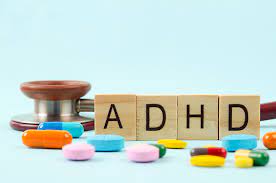One of the most common mental health issues in the world, anxiety disorders impact people of all ages and socioeconomic backgrounds. The development of anxiety disorders is influenced by a combination of genetic, neurobiological, and environmental factors; nonetheless, stressful events are a major component in both initiating and intensifying anxiety disorders. This essay analyzes the underlying causes, frequent types of anxiety disorders associated with trauma, the impact of traumatic experiences on the formation and expression of anxiety disorders, and therapeutic options for anxiety related to trauma.
Knowing Traumatic Events and How They Affect Us
Events that are traumatic are upsetting or potentially fatal situations that exceed a person’s capacity for adjustment and cause them to feel extreme terror, helplessness, or fear. Physical or sexual assault, exposure to combat, natural disasters, accidents, maltreatment or neglect of children, and witnessing violence are a few examples. Even though not everyone who is subjected to trauma goes on to acquire an anxiety disorder, those who are exposed to interpersonal, chronic, or repetitive trauma are much more likely to do so.
Mechanisms Connecting Anxiety Disorders with Trauma
Anxiety disorders and traumatic events are related through intricate neurobiological, psychological, and social mechanisms:
Hyperarousal and Hypervigilance
Individuals who have experienced trauma frequently exhibit elevated arousal and hypervigilance, which is typified by heightened sensitivity to possible dangers and an enduring state of attention. Post-traumatic stress disorder (PTSD) and generalized anxiety disorder (GAD) may be exacerbated by these reactions.
Fear Conditioning and Avoidance
Associative learning processes resulting from traumatic experiences might cause stimuli connected to the event to elicit fear reactions. Avoidance behaviors arise from people’s attempts to block out trauma reminders, which can exacerbate anxiety symptoms and make it difficult to go about daily tasks.
Neurobiological Changes:
Neurobiological changes associated with anxiety disorders include changes in the serotonin and dopamine neurotransmitter systems as well as long-term exposure to stress hormones like cortisol. Trauma-related anxiety frequently manifests as dysregulation of the hypothalamic-pituitary-adrenal (HPA) axis and hyperactivity of the amygdala.
Cognitive and Emotional Processing
Trauma can cause cognitive processes associated with threat assessment to be disrupted, resulting in skewed perceptions of vulnerability and danger. Maladaptive coping mechanisms and anxiety symptoms can be sustained by negative self-perceptions and beliefs about the outside environment.
Types of Trauma-Related Anxiety Disorders
Anxiety disorders that are frequently connected to traumatic occurrences include:
Post-Traumatic Stress Disorder (PTSD
Features of PTSD include increased arousal, avoidance of trauma reminders, intrusive reliving of the event (such as dreams or flashbacks), and unfavorable changes in mood and cognition. PTSD often develops after traumatic events like sexual assault, combat, or accidents.
Generalized Anxiety Disorder (GAD):
This condition is characterized by excessive worry and anxiety about a variety of commonplace issues, as well as physical symptoms such irritability, muscle tension, and restlessness. The development of GAD may be influenced by a history of negative experiences, persistent stress, or early-life trauma.
Panic Disorder
Physical symptoms including palpitations, sweating, and shortness of breath are frequently present along with recurring panic attacks, which are abrupt bursts of extreme dread or discomfort. Panic attacks can be brought on by traumatic experiences or major life stressors, which can also hasten the onset of the illness.
Social Anxiety Disorder
People with social anxiety disorder exhibit avoidance tendencies as a result of their severe dread of being scrutinized by others and social circumstances. Bullying, rejection, or public humiliation are examples of traumatic events that might hasten the onset of social anxiety disorder.
Treatment Methods for Anxiety Associated with Trauma
A comprehensive strategy that treats both trauma exposure and anxiety symptoms is necessary for the effective treatment of trauma-related anxiety disorders:
Cognitive Behavioral Therapy with a Trauma Focus (TF-CBT
Cognitive restructuring methods and exposure-based therapies are combined in TF-CBT to help patients process traumatic experiences, refute unhelpful beliefs, and lessen symptoms of anxiety. It is regarded as the best method for treating anxiety associated with trauma and PTSD.
Eye Movement Desensitization and Reprocessing (EMDR):
This psychotherapy technique uses bilateral stimulation—such as tapping or eye movements—to help patients process and integrate painful memories. The goal of EMDR is to lessen the emotional pain and reactivity brought on by traumatic events.
Medication Management
Medications for anxiety disorders are frequently administered, including serotonin-norepinephrine reuptake inhibitors (SNRIs) and selective serotonin reuptake inhibitors (SSRIs). They assist in reducing symptoms including panic attacks, hyperarousal, and intrusive thoughts. For best results, however, medication is frequently utilized in addition to psychotherapy.
Mindfulness-Based Interventions
Mindfulness techniques, such mindfulness-based cognitive therapy (MBCT) and mindfulness-based stress reduction (MBSR), encourage acceptance of troubling thoughts and feelings as well as present-moment awareness. For trauma survivors, mindfulness practices help lessen anxiety symptoms and improve coping mechanisms.
Difficulties with Rehab and Treatment
Treating anxiety disorders associated with trauma poses many obstacles for both treating professionals and patients:
The intricacy of trauma histories
The intensity, duration, and effects of trauma events differ greatly, requiring customized therapy plans catered to the particular requirements and situations of each survivor.
Comorbidity with Other Disorders
Anxiety disorders associated with trauma frequently co-occur with other mental health issues, including personality disorders, substance use disorders, and depression. Managing complicated presentations and enhancing overall results require integrated treatment techniques.
Stigma and Barriers to Care
People may be discouraged from obtaining prompt and adequate treatment if they are stigmatized for mental health problems or symptoms connected to trauma. Community-based initiatives and culturally aware methods can lessen stigma and increase access to care.
Prospects for Research and Clinical Practice in the Future
Subsequent research endeavors seek to augment our comprehension of anxiety disorders associated with trauma and optimize therapeutic methodologies.
Neurobiological Mechanisms
New developments in biomarker and neuroimaging techniques may reveal biomarkers linked to anxiety disorders and trauma exposure that will inform individualized treatment plans.
Early Intervention & Prevention
Following trauma exposure, early identification of those who are at-risk and the application of preventative interventions can slow the onset of chronic anxiety disorders and foster resilience.
Global Mental Health Initiatives
Addressing global gaps in mental healthcare requires expanding access to evidence-based therapies and culturally sensitive interventions for anxiety disorders associated with trauma.
In summary
In summary, traumatic experiences have a major impact on the neurological, psychological, and social pathways that lead to and exacerbate anxiety disorders. Effective treatment options that support trauma survivors’ recovery and resilience are developed with an understanding of the intricate relationships that exist between exposure to trauma and anxiety symptoms.By means of trauma-focused therapy, medication management, mindfulness-based interventions, and all-encompassing support networks, people can effectively tackle anxiety connected to trauma and restore their sense of safety, autonomy, and overall well-being. To improve outcomes for people navigating the devastating impact of traumatic experiences on mental health, reduce stigma, and advance trauma-informed treatment practices, more research and innovative clinical approaches are needed.








